Following the outbreak of COVID-19, this thesis would like to push for a re-conceptualisation of foreign worker housing beyond the adoption of new pandemic resilient standards. The workers’ appalling living conditions were symptoms of deeper structural problems concerning Singapore’s immigration model that fuels economic exploitation. The construction of foreign worker infrastructures in far-flung locations also furthers a legacy of segregation that recreates the workers’ lowly societal status.
Therefore, the thesis seeks to decentralise foreign worker housing into local neighbourhoods through a nomadic dormitory model. These heartland dormitories would temporarily occupy vacant lands that are waiting to be developed and relocate after 5 years. Besides being a worker dormitory, they are equipped with a wide range of programmatic attractors to build engagement with the local residents. Through a coexistence approach, the thesis aims to normalise the presence of foreign workers within Singapore’s society. It hopes to facilitate tolerance, understanding, and a more informed citizenry that would further public discourses towards a more balanced relationship with foreign labour.

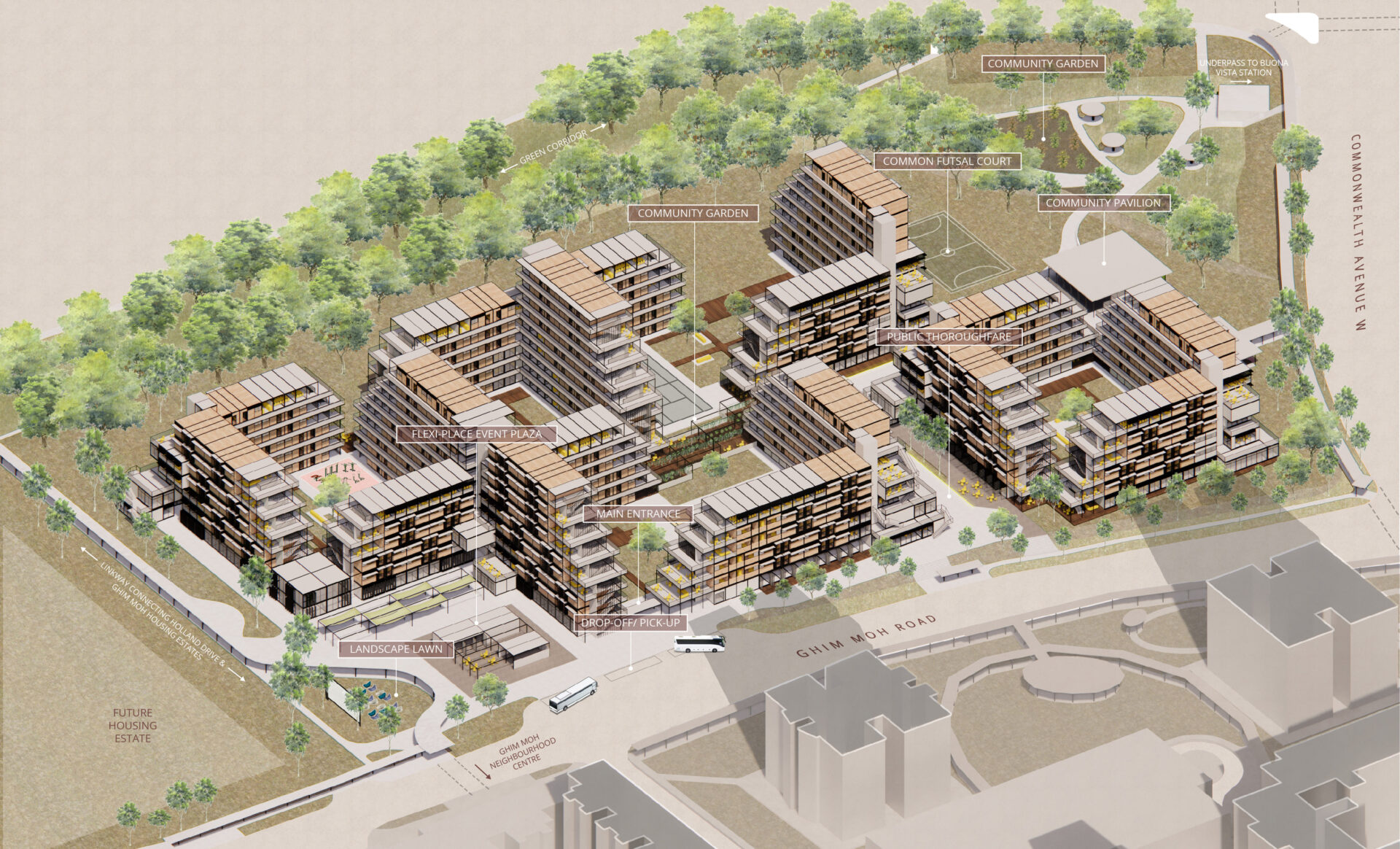
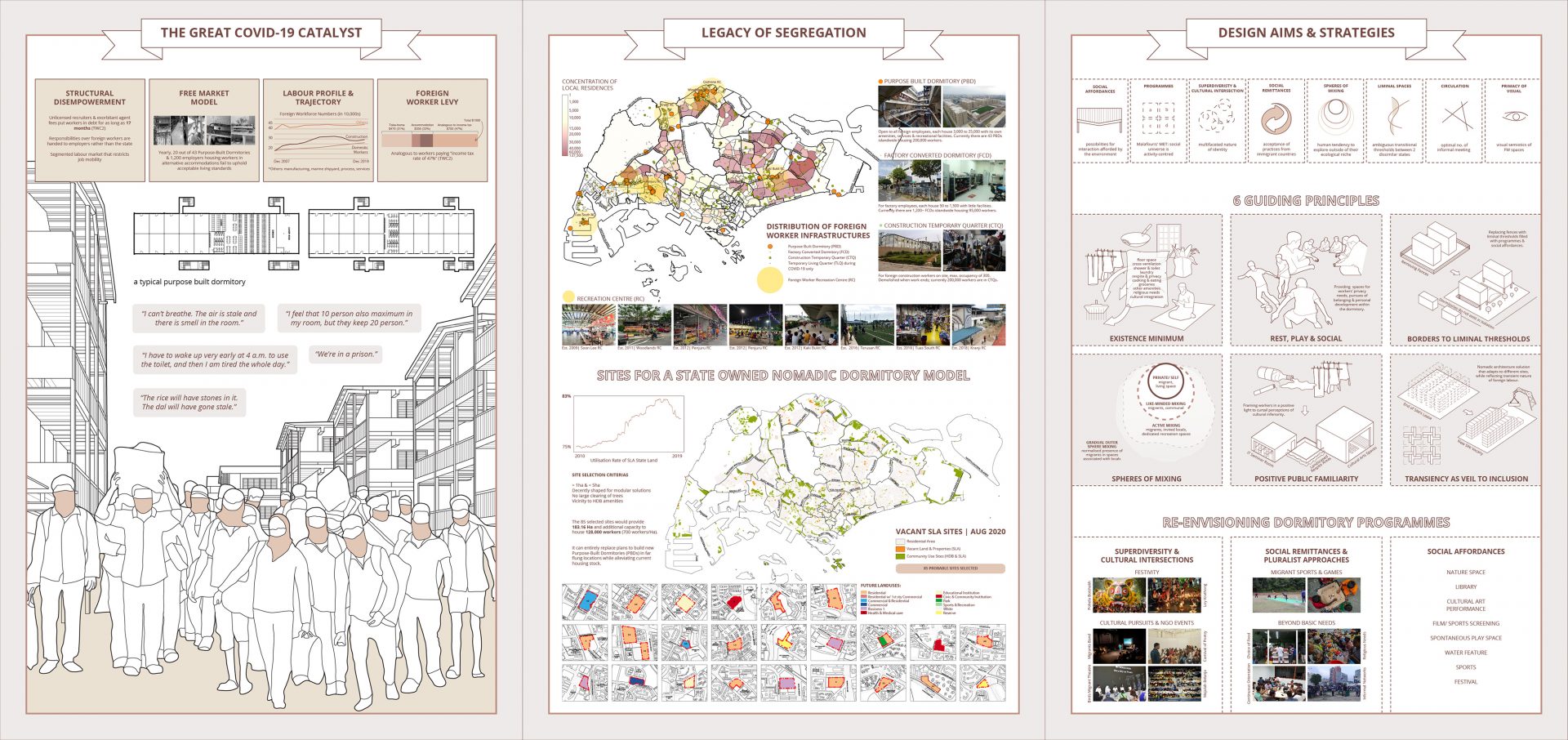
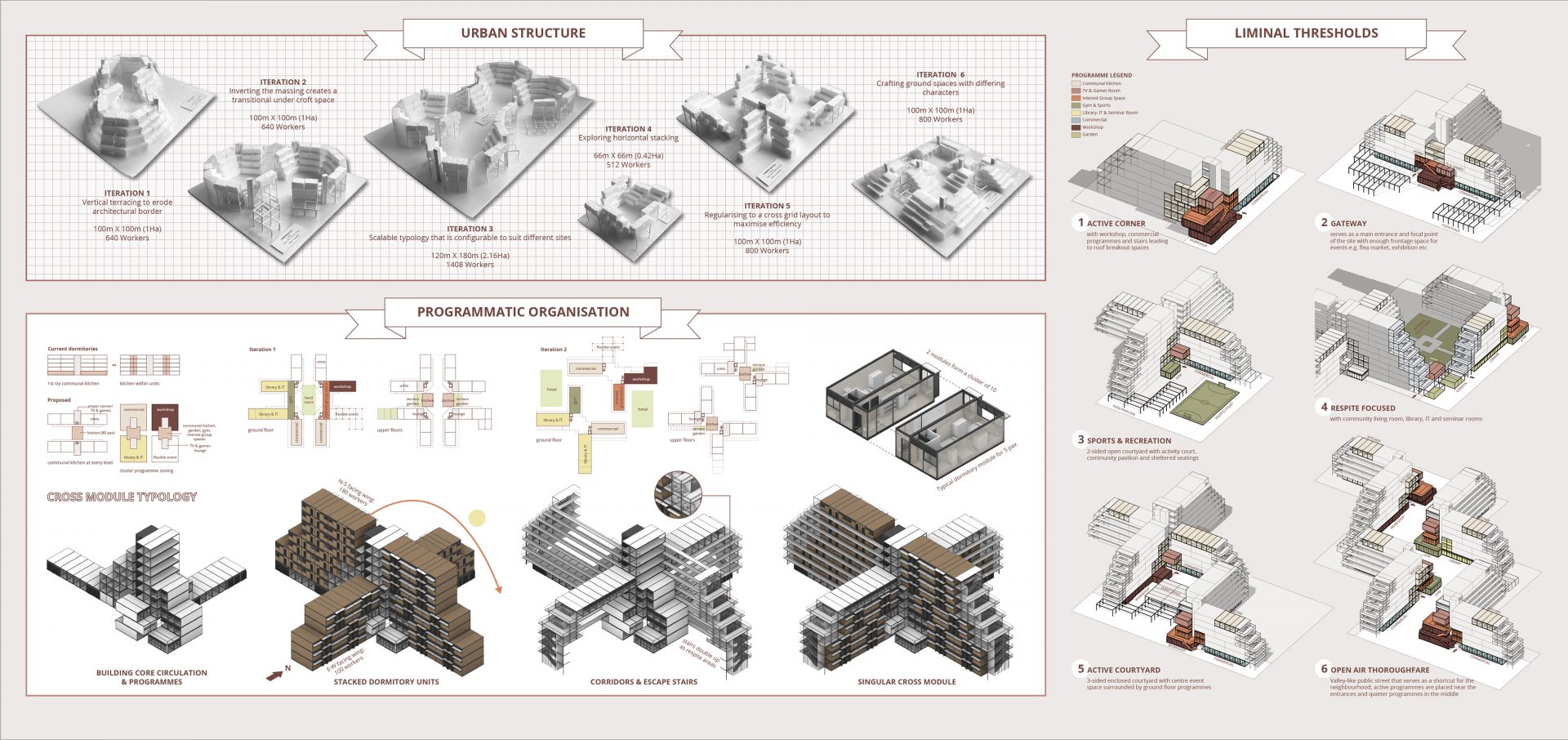
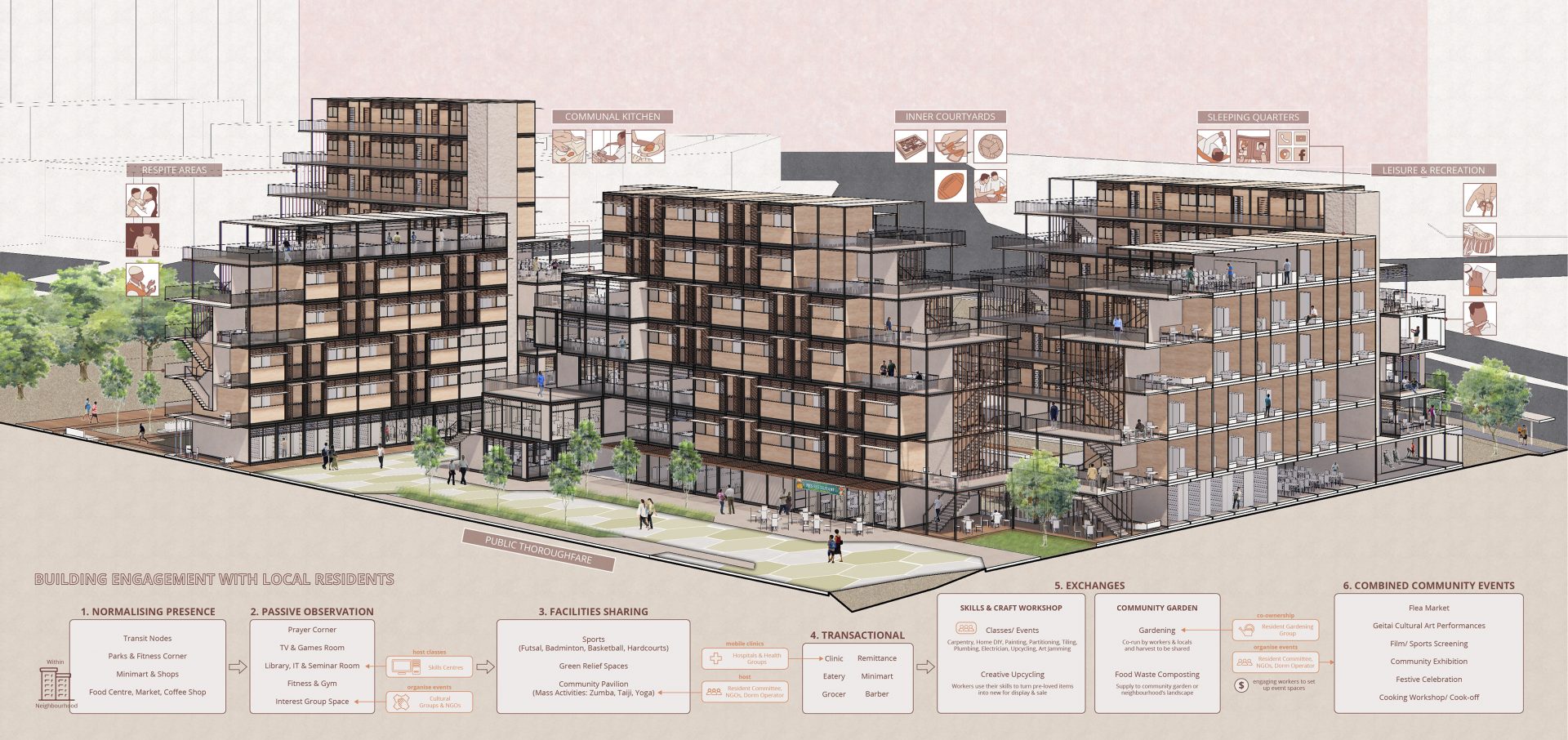
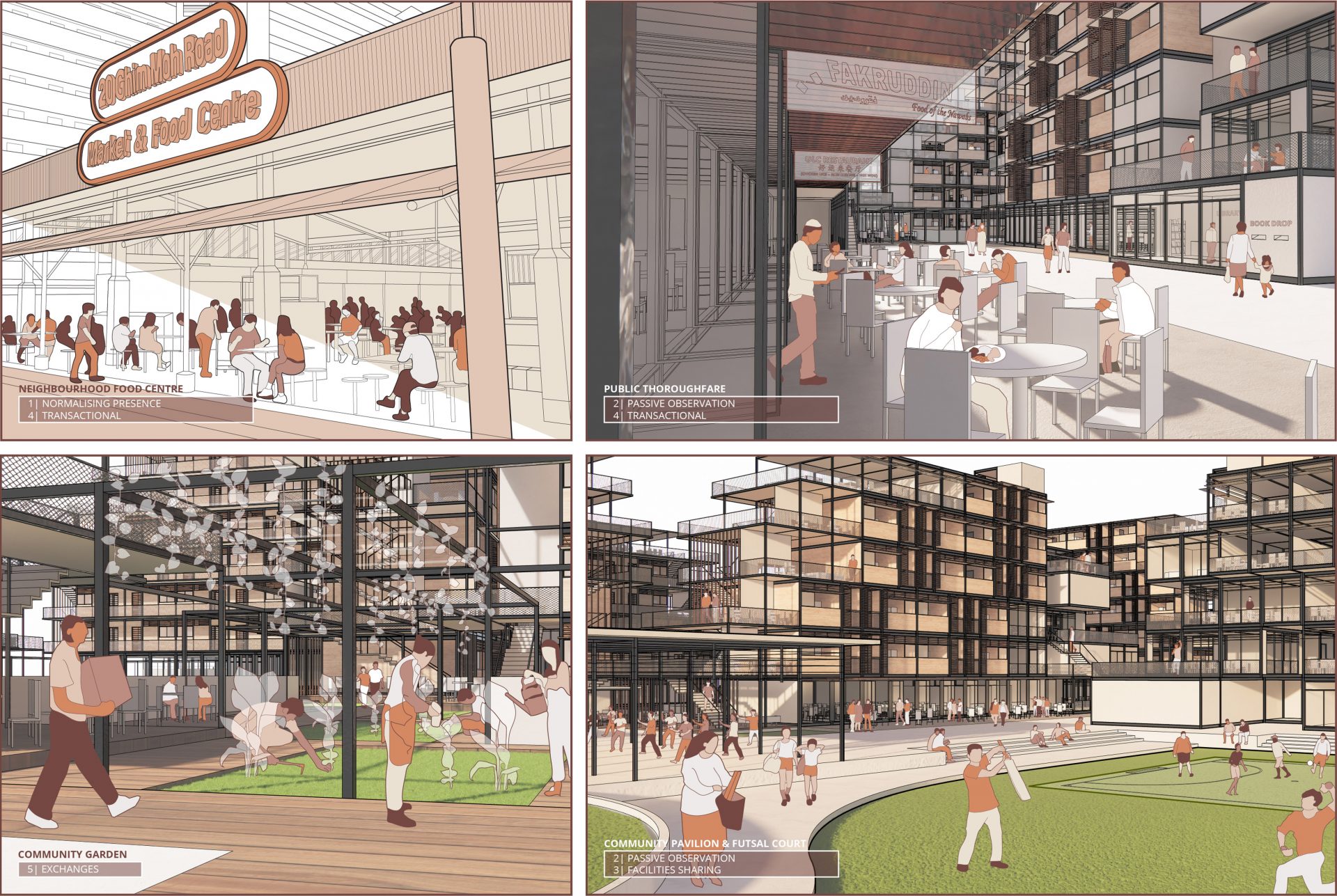
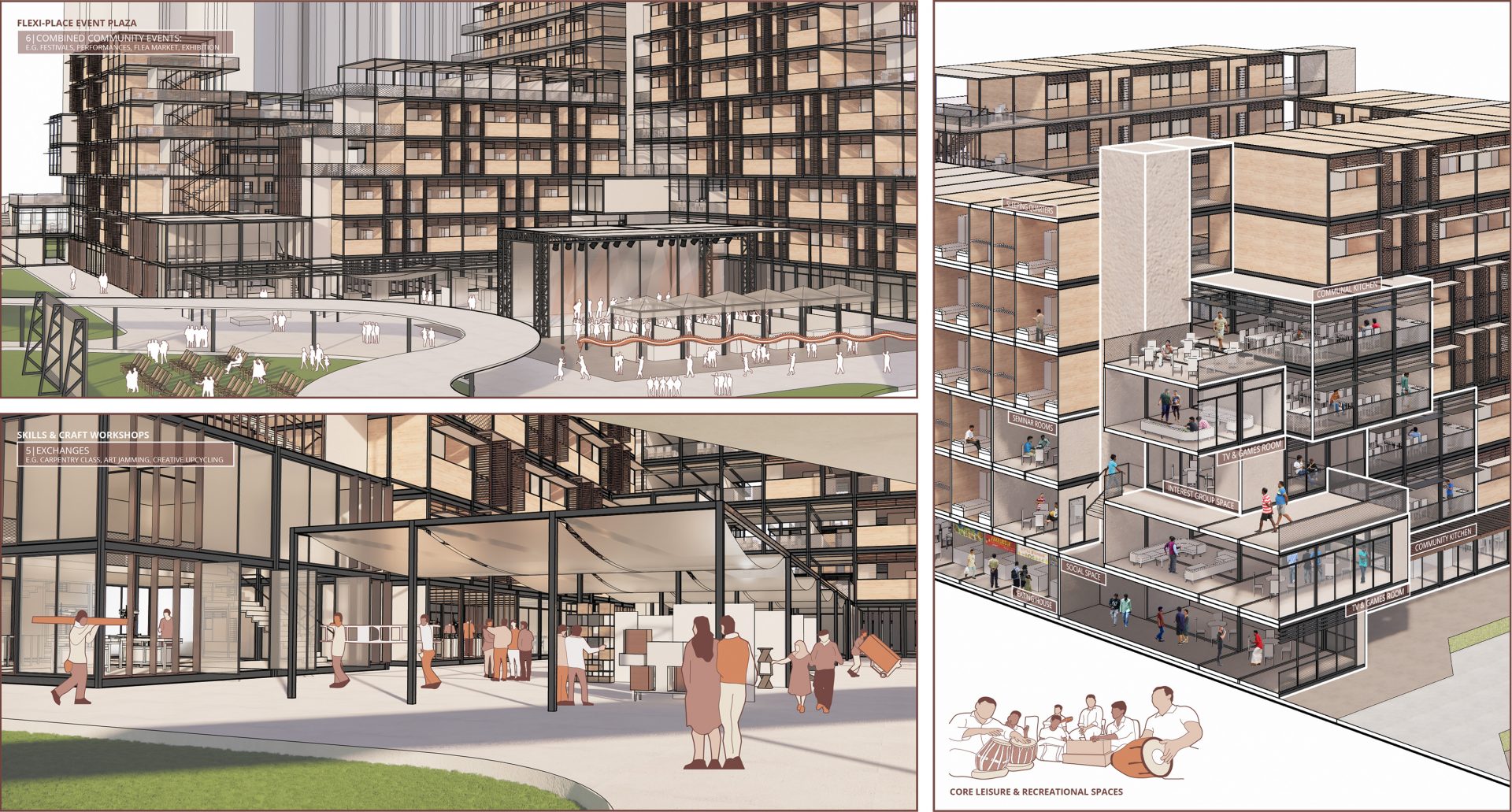
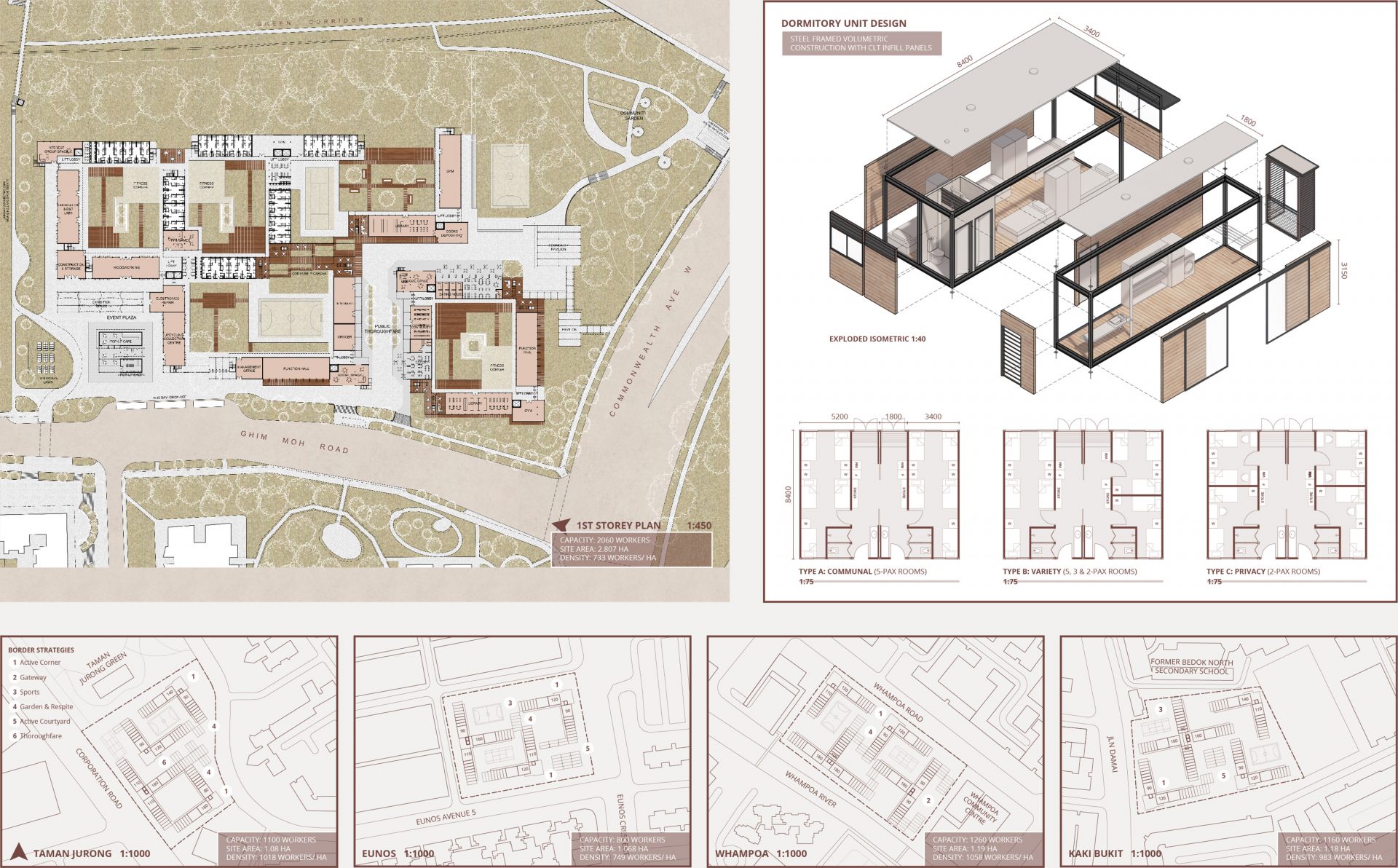
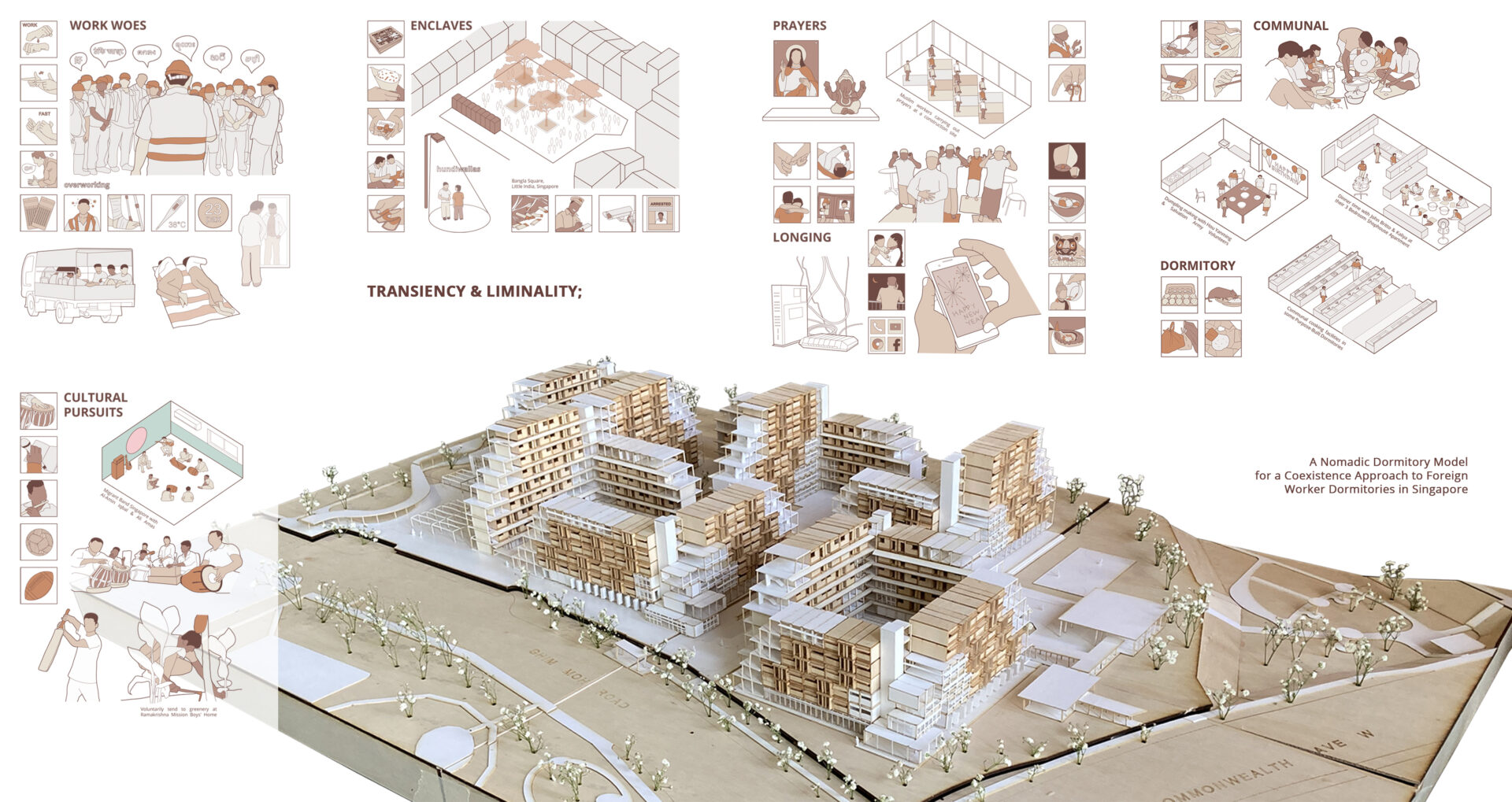
Supervisor's comments:
The covid-19 pandemic has surfaced the poor living conditions of Singapore’s migrant workers. Chi Khay took on this challenging and timely issue of migrant housing with a fresh perspective. Her proposal to make use of the numerous vacant state land which are usually only developed 5 to 10 years down the road is a plausible one. Modular design enables the units to be moved to another site for migrant housing or to be repurposed when the land needs to be developed. The design provides the setting for different degree and nature of encounters between residents and workers which will engender empathy for the latter.
- Assoc. Prof. Tan Beng Kiang (Dr.)